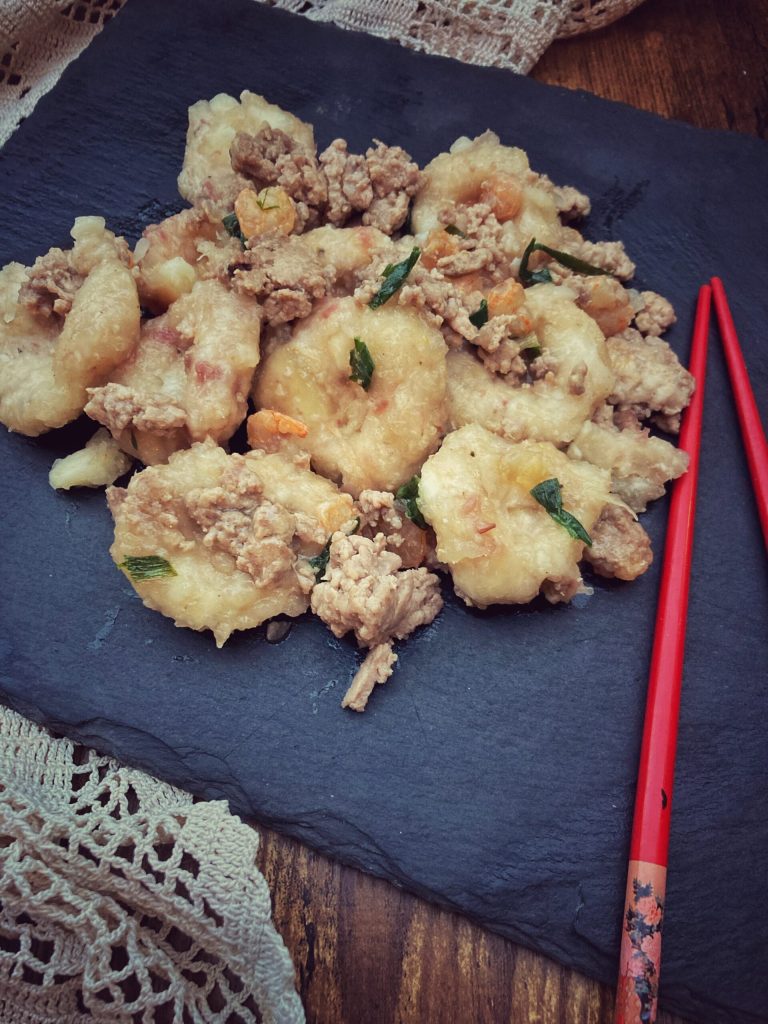The Chinese call Hakka abacus seeds: suan pan zi.
▶A Chinese specialty of the Hakka (a Chinese subgroup) consisting of disc-shaped dumplings with “dimples.” The round shape represents reunion and good health.
▶Due to its association with the abacus and money counting, the dish is consumed during celebrations like Chinese New Year to signify wealth and prosperity.
▶Eating it for Chinese New Year means you will have more money to count in the coming year.
▶It was prepared by Hakka women for the men of the village to take with them when venturing in search of work.
▶The dish was both food and a symbolic wish for the men to find success and earn more to count with an abacus.
▶The dough is made with taro puree, tapioca, salt, and boiling water.
The dumplings are boiled and then sautéed with minced pork, shiitake, dried shrimp, dried cuttlefish.

- Difficulty: Medium
- Cost: Cheap
- Preparation time: 20 Minutes
- Portions: 2 people
- Cooking methods: Boiling
- Cuisine: Chinese
- Seasonality: All seasons
Ingredients
- 8.8 oz taro
- 4.4 oz tapioca
- to taste salt and pepper
- 12.3 oz minced pork
- 2.1 oz dried shrimp
- 4 dried Shiitake mushrooms
- 1.4 oz dried cuttlefish (optional)
- 1 spring onion (green part)
- to taste coriander
- to taste vegetable oil
Steps
Cut the taro into cubes and boil until soft.
Mash it, add salt and pepper, and the tapioca (cassava starch), adjusting water until the dough is soft and workable.
Make small balls and press a “dimple” in the center with your thumb.
Boil in salted water.
In a pan, fry the meat in vegetable oil, add the dried shrimp, mushrooms soaked in water (and the dried cuttlefish).
Serve garnished with the green part of the spring onion and fresh coriander.

FAQ
What is taro and what can I substitute it with?
It is an herbaceous plant with tubers similar to potatoes and is commonly cultivated to obtain flour and starch from its rhizomes. In this recipe, it can be substituted with cassava or green plantain.
What is an abacus?
It is an ancient calculating tool used as an aid for performing mathematical operations; it is the first tool used for calculations since the 21st century BC in China and the Fertile Crescent, and later used among the Greeks and Romans. Commonly also called abacus.

